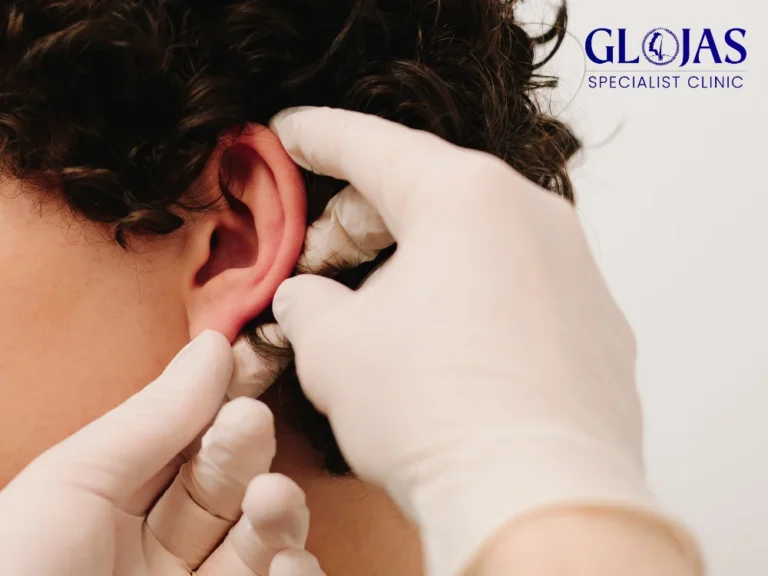Otoplasty, commonly known as ear surgery, is a cosmetic procedure aimed at enhancing the shape, position, or proportion of the ears. Whether you’re considering it for aesthetic reasons or to correct a structural issue, understanding the otoplasty cost is crucial for effective financial planning. In this article, we’ll explore all the essential aspects of otoplasty cost, including factors influencing the price and ways to manage expenses.
What is Otoplasty?
Otoplasty is a surgical procedure designed to improve the appearance of the ears. This procedure can correct protruding ears, asymmetry, or other ear deformities. It’s typically performed on children over the age of five but is also popular among adults seeking aesthetic enhancement.
While otoplasty can significantly boost confidence and self-esteem, one of the most common concerns is the cost. So, how much does otoplasty cost, and what factors influence it?
Average Otoplasty Cost
The average otoplasty cost in the United States ranges from $3,000 to $7,000. However, this figure can vary depending on several factors, including the complexity of the procedure, the surgeon’s experience, and geographic location. It’s important to note that this cost typically includes the surgeon’s fee, anesthesia, facility fees, and follow-up appointments.
Factors Influencing Otoplasty Cost
Surgeon’s Experience and Expertise
Highly experienced surgeons tend to charge more for their services. Their advanced skills and reputation for delivering excellent results often justify the higher price. However, investing in a qualified and experienced surgeon can minimize risks and ensure satisfactory outcomes.
Complexity of the Procedure
Not all otoplasty procedures are the same. Some may involve minor corrections, while others require extensive reshaping or reconstruction. More complex surgeries naturally increase the overall otoplasty cost.
Geographic Location
The cost of living and demand for cosmetic surgery significantly influence prices. For instance, otoplasty in metropolitan areas like New York or Los Angeles is generally more expensive compared to smaller cities or rural areas.
Type of Anesthesia Used
General anesthesia is more costly than local anesthesia. The choice between the two depends on the procedure’s complexity and the patient’s comfort level.
Facility Fees
Otoplasty performed in a high-end surgical center or hospital typically incurs higher facility fees. Opting for accredited outpatient centers can help reduce this cost without compromising safety.
Post-Operative Care and Medications
The cost of follow-up appointments, prescription medications, and recovery supplies can add to the overall expenses. It’s essential to include these costs when budgeting for otoplasty.
Additional Expenses
These may include consultation fees, pre-operative tests, and the cost of revision surgery if needed. Some surgeons offer package deals that encompass these extras, so it’s worth inquiring during consultations.

Is Otoplasty Covered by Insurance?
In most cases, otoplasty is considered a cosmetic procedure and is not covered by insurance. However, if the surgery is deemed medically necessary (e.g., to correct a congenital deformity or injury), partial or full coverage may be possible. It’s advisable to check with your insurance provider for detailed information on eligibility and reimbursement.
Ways to Manage Otoplasty Cost
Financing Options
Many plastic surgeons offer financing plans to make the otoplasty cost more affordable. These plans allow you to pay in installments over a set period, reducing the burden of upfront expenses.
Special Discounts and Promotions
Some clinics provide seasonal discounts, promotional offers, or package deals. Keep an eye out for these opportunities, as they can significantly reduce costs.
Medical Tourism
Traveling to countries where cosmetic surgery is more affordable is another option. However, it’s essential to research thoroughly to ensure the surgeon’s credentials and the facility’s safety standards.
Using Health Savings Accounts (HSA) or Flexible Spending Accounts (FSA)
If the procedure is deemed medically necessary, you might be able to use HSA or FSA funds to cover the expenses, offering potential tax benefits.
What to Expect During Otoplasty Recovery?
The recovery period for otoplasty generally lasts one to two weeks. Patients may experience mild discomfort, swelling, or bruising, which can be managed with prescribed painkillers and cold compresses. It’s advisable to avoid strenuous activities for at least a month to ensure proper healing.
Proper post-operative care, including follow-up visits, is crucial for optimal results and avoiding complications. Keep in mind that follow-up appointments might add to the overall otoplasty cost.
Choosing the Right Surgeon
Selecting a qualified and board-certified plastic surgeon is essential for a safe and successful otoplasty. Don’t base your decision solely on cost; consider the surgeon’s experience, reputation, and patient testimonials. A higher fee is often a reflection of the surgeon’s skill and expertise, ensuring a better outcome.
Frequently Asked Questions FAQs
1. How much does otoplasty cost on average?
The average otoplasty cost in the U.S. ranges from $3,000 to $7,000, depending on various factors like the surgeon’s expertise, geographic location, and procedure complexity.
2. Does insurance cover otoplasty?
Typically, otoplasty is considered a cosmetic procedure and is not covered by insurance. However, if it’s medically necessary, partial or full coverage might be available.
3. Are there financing options available for otoplasty?
Yes, many plastic surgery clinics offer financing plans, allowing you to pay in manageable installments over time.
4. How long does otoplasty recovery take?
The recovery period typically lasts one to two weeks, with full healing taking about a month. During this time, patients should avoid strenuous activities.
5. Can adults undergo otoplasty?
Yes, otoplasty is suitable for both children and adults looking to improve the appearance of their ears.
6. What are the risks associated with otoplasty?
Like any surgical procedure, otoplasty carries risks such as infection, scarring, asymmetry, or changes in skin sensation. Choosing an experienced surgeon minimizes these risks.
Conclusion
Understanding the various factors that influence otoplasty cost can help you make an informed decision and budget accordingly. From the surgeon’s expertise to geographic location and additional expenses, each element plays a significant role in determining the final cost. While otoplasty is an investment, its potential to boost confidence and enhance appearance makes it worthwhile for many individuals.
If you’re considering otoplasty, consult with multiple surgeons, ask about financing options, and be sure to choose a qualified, board-certified professional. Proper planning and research will help you achieve the desired results without unnecessary financial strain.
